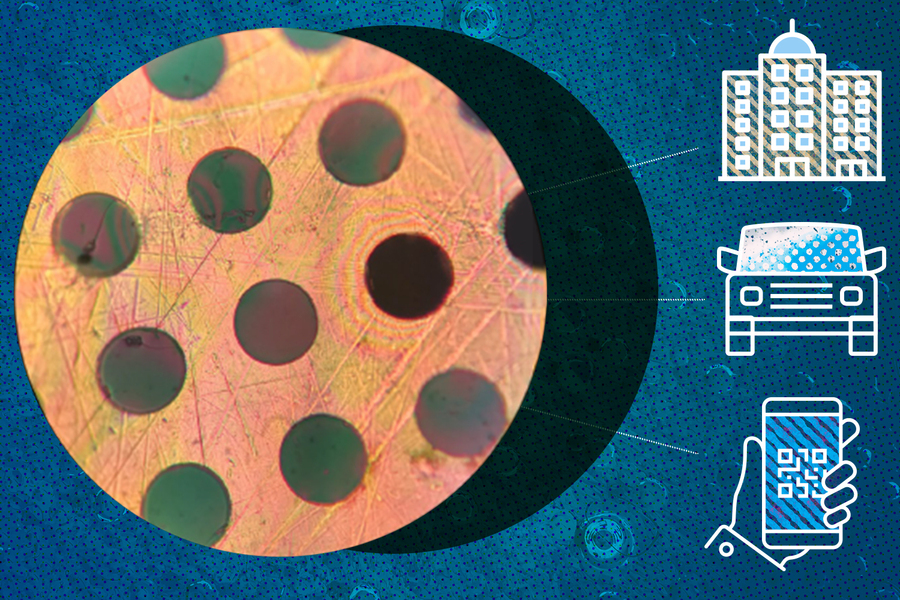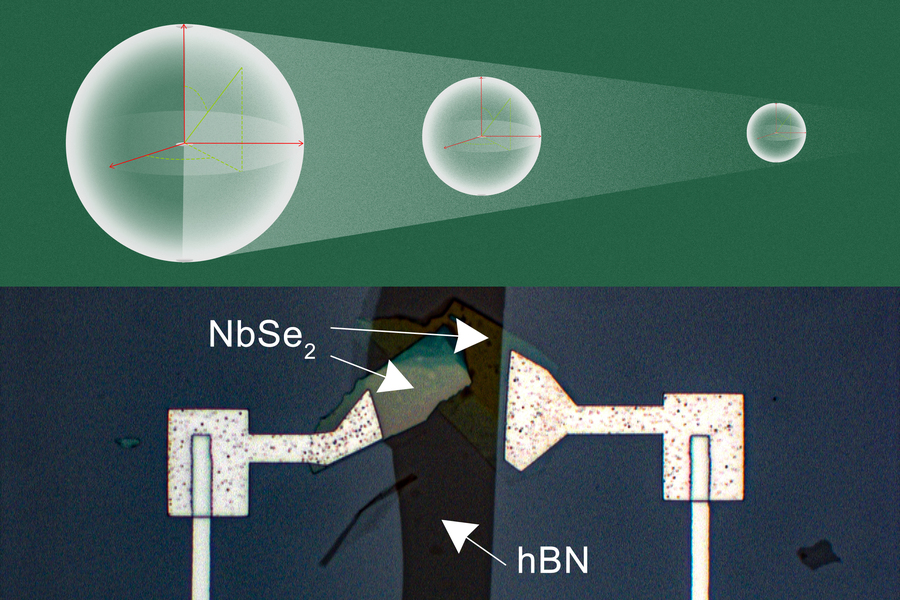2022-02-02 アメリカ合衆国・マサチューセッツ工科大学(MIT)

・ MIT が、ポリマーの 2D シートを作製する新しい重合化プロセスにより、鋼よりも強靱でプラスチックのように軽量な 2D ポリマー材料の「2DPA-1」を開発。
・ 2DPA-1 は、車輌部品や携帯電話用の軽量・高耐久コーティング剤を始め、橋梁等の構造物の材料を含む新たなアプリケーションが期待できる。
・ ポリマーはモノマーと呼ばれる構成要素の鎖から構成され、鎖の末端に分子を付け加えることでポリマー鎖を伸長し、射出成形でペットボトル等の 3D オブジェクトが形成できる。
・ 1D のポリマー鎖を 2D のシートに形成することで極めて強力で軽量な材料ができると予想されているが、成長中の平面シートで 1 個のモノマーの上下が回転するだけで 3D 形状に展開し、シート状の構造を失うため、これまでの研究では不可能とされてきた。
・ 炭素の環と窒素原子を含んだメラミンをモノマーの構成要素として利用し、ポリアラミドと呼ばれる2D シートを製造する重合化プロセスを設計。適切な条件下でモノマーが 2D のディスクを形成し、重なった 2D ディスク間の水素結合が極めて安定した強力な構造を保持する。
・ 同プロセスは溶液中での自己組織化のメカニズムを利用するため、出発材料を増量するだけで大量の合成が可能で、合成後はスピンコーティングにより非常に強靱な薄膜を容易に作製できる。
・ 2DPA-1 は防弾ガラスの 4~6 倍の弾性率と、鋼鉄の 2 倍の降伏強度(密度は 1/6)を有する。また、気体の透過を完全に遮断するため、金属を保護する超薄膜バリア塗料の製造も可能となる。
・ 今後は 2DPA-1 の 2D シート形成についてより詳細に調査し、分子構成を変更して別種の新材料の作製を試みる。同ポリマー製造プロセスについては、特許 2 件を出願済み。
・ 本研究には、米国エネルギー省(DOE)科学局が支援するエネルギーフロンティア研究センター(EFRC)の Center for Nanofluidic Transport (CENT)と、米国陸軍研究所(ARL)が資金を提供した。
URL: https://news.mit.edu/2022/polymer-lightweight-material-2d-0202
<NEDO海外技術情報より>
(関連情報)
Nature 掲載論文(アブストラクトのみ:全文は有料)
Irreversible synthesis of an ultrastrong two-dimensional polymeric material
URL: https://www.nature.com/articles/s41586-021-04296-3
Abstract
Polymers that extend covalently in two dimensions have attracted recent attention1,2 as a means of combining the mechanical strength and in-plane energy conduction of conventional two-dimensional (2D) materials3,4 with the low densities, synthetic processability and organic composition of their one-dimensional counterparts. Efforts so far have proven successful in forms that do not allow full realization of these properties, such as polymerization at flat interfaces5,6 or fixation of monomers in immobilized lattices7,8,9. Another frequently employed synthetic approach is to introduce microscopic reversibility, at the cost of bond stability, to achieve 2D crystals after extensive error correction10,11. Here we demonstrate a homogenous 2D irreversible polycondensation that results in a covalently bonded 2D polymeric material that is chemically stable and highly processable. Further processing yields highly oriented, free-standing films that have a 2D elastic modulus and yield strength of 12.7 ± 3.8 gigapascals and 488 ± 57 megapascals, respectively. This synthetic route provides opportunities for 2D materials in applications ranging from composite structures to barrier coating materials.



